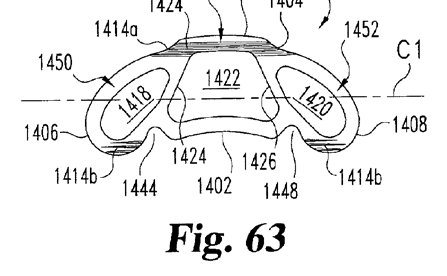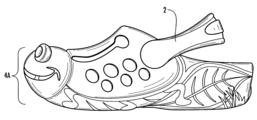Amending Patent Claims in Inter Partes Reviews
| February 24, 2014
The number of “Final Written Decisions” in inter partes review proceedings is still too small to talk about a “kill rate.” Nevertheless, the initial results appear to favor those challenging patent validity. A notable example is the APJs’ decision from earlier this month in Nichia v. Emcore (IPR2012-0005), where the petitioner appears to have won on all issues. The case is noteworthy for practitioners, however, in its lengthy instruction to patent owners on how to amend claims in inter partes review.
The patentee Emcore moved to amend 10 of the 17 claims under review. The APJs denied the motion. A series of guiding principles for patentees to consider may be gleaned from the APJs’ decision.
- Inter partes review is “more adjudicatory than examinational.”
- The patentee has the burden of showing that it is entitled to amend its claims.
- For each challenged claim, a patent owner may propose a reasonable number of substitute claims, i.e., in most all cases, there will be one substitute claim for each claim replaced.
- For each proposed substitute claim, the patentee must identify the challenged claim that it replaces.
- The list of proposed substitute claims must identify any new subject added to or deleted from the original claim.
- The motion “must identify how the proposed substitute claims are to be construed, especially where the proposed substitute claims introduce new claim terms.”
- The motion must “respond to a ground of unpatentability involved in the trial,” presumably the grounds on which the replaced claim is reviewed.
- A challenged claim may not be broadened in any respect.
- The motion must expressly identify the written description support in the original application (not the issued patent) for a proposed substitute claim.
- The patentee “bears the burden of proof in demonstrating patentability of the proposed substitute claims over the prior art in general, and thus entitlement to add these proposed substitute claims to its patent.”
- The patentee must explain why the proposed substitute claims are patentable over all prior art of record, not merely over the prior relied upon for the grounds of review.
- A conclusory statement by the patentee or its expert that the proposed substitute claims are patentable over the prior art references is insufficient.
The APJs denied Emcore’s motion and, in doing so, elucidated on these principles. First, the APJs concluded that the motion had failed to propose a reasonable number of substitute claims. “Emcore generally identifies the challenged claims, as a group, to be cancelled and identifies the proposed new claims, as a group. Id. Emcore fails to demonstrate which proposed new claim is replacing which specific challenged claim.”
Second, the motion failed to comply with the claim listing requirement because it did not identify all the changes between the original claims and the proposed substitute claims. Specifically, the motion failed “to identify the limitation in proposed claim 18—‘wherein the top layer prevents cratering of the semiconductor during bonding’—as a new limitation, and fails to identify the limitation in claim 2—‘wherein said annealing step is performed at about 400-600 ºC’—as a deletion.”
Third, the motion construed three claim terms, but did “not provide any constructions for the new claim terms recited in its proposed substitute claims.”
Fourth, the APJs found that the motion did not comply with the requirement of responding to a “ground of unpatentability.”
Emcore does not explain adequately why the removal of all those limitations is responsive to a ground of unpatentability. Emcore fails to appreciate that a patent owner may not seek to broaden a challenged claim in any respect, in the name of responding to a ground of unpatentability. A proposed substitute claim is not responsive to a ground of unpatentability of a challenged claim if it removes any feature of the challenged claim being replaced, and even more so, as here, if all of the features of the challenged claim are being removed.
(Emphasis added).
Fifth, the motion did not
cite to the originally-filed specification of the ’965 application for the actual claim language of each proposed substitute claim. Although Emcore cites to the ’215 patent, that alone is insufficient. For instance, Emcore provides a citation, without any explanation, to the patent claims that may or may not be a part of the original disclosure—“Proposed claim 21: See, e.g. existing claims 6, 14, and 15.” Mot. A. 5. Such a vague statement is inadequate to determine the written description support for Emcore’s proposed substitute claims.
(Emphasis added).
And sixth, the motion failed to explain adequately why the proposed substitute claims are patentable over the prior art. The patentee presented an expert declaration on this point, but the
declaration does not discuss each new feature added in the proposed substitute claims. Neither Emcore’s motion, nor Dr. Goorsky’s testimony, discusses the level of ordinary skill in the art, explaining the basic knowledge and skill set already possessed by one of ordinary skill in the art, with respect to the new claim features. Limiting the discussion to the references relied upon in the instituted ground of unpatentability does not provide a meaningful analysis.
(Emphasis added).
Was the APJs’ denial of the motion to amend based on the cumulative impact of the six requirements discussed above? Or would they have denied the motion for failure to comply with any of the requirements? One senses the latter. Permeating the decision is the belief that the APJs need to be as strict as they are in order to deal with the volume of review proceedings. As that volume increases, the APJs are unlikely to relax their standards.
Medtronic’s IPR Petition Denied
| February 20, 2014
It has been commonly reported that the APJs are instituting approximately 85% of the inter partes review requests filed. This institution rate might be declining, however, as the APJs critically review petitioners’ application of the challenged claims to the cited prior art.
The statutory standard for deciding whether to institute is, of course, whether the petition and any response from the patents shows that “there is a reasonable likelihood that the petitioner would prevail with respect to at least 1 of the claims challenged in the petition.” 35 U.S.C. § 314(a); emphasis added. In their application of this standard, however, the APJs require each detail of how the claims relate to the prior art be expressly defined.
Last Thursday’s decision denying institution in Medtronic, Inc. v. NuVasive, Inc. (IPR2013-00504) is a case-in-point. NuVasive’s patent – which is the subject of an infringement action in the Southern District of California – claims a spinal fusion implant. In customary fashion, Medtronic presented a claim chart linking each limitation of NuVasive’s challenged claims to the disclosure of the prior art.
Among those limitations was one reciting a certain width and length relation of the patented implant. Medtronic presented the following drawing from the primary prior art reference, identifying the length and width dimensions with horizontal and vertical arrows.
Maximum Lateral Width
Longitudinal Length
Medtronic then explained that this drawing from the primary prior art reference
provides that the implant has a longitudinal length that extends from the proximal wall to the distal wall and a maximum lateral width extending from the first side wall to the second sidewall. As shown in Figure 63 of Frey, the longitudinal length is perpendicular to, and greater than, the maximum lateral width.
This explanation did satisfy the APJs.
Medtronic recognizes that the medial plane of the implant would be a plane that intersects the implant approximately at the midpoint of the longitudinal length. The maximal lateral width, as shown in annotated Figure 63, is not at the midpoint of the longitudinal length, but is closer to one end of the implant than the other. Stated differently, Medtronic does not explain how the maximum lateral width of the implant is along a medial plane that is generally perpendicular to the longitudinal length, as required by independent claim 1.
(Emphasis added). Thus, in the APJs’ opinion, Medtronic’s analysis failed to track the wording of the claim limitation and thus failed to demonstrate “a reasonable likelihood that it will prevail on any of the challenges.”
The message for practitioners is that an IPR petition is not merely the opening salvo of the long campaign. Rather, every aspect of a proposed ground for review must be explained with unerring precision.
Crocs Attacks Patents for“Animal-Character” Shoes, Among the Requests Week of February 10, 2014
| February 18, 2014
Last year Polliwalks, Inc. sued Crocs and Kohl’s for infringing two patents – U.S. Patent Nos. 8,371,043 & 8,371,044 – by selling “Crocs Crocskin Clogs.” Those patents claim shoes in which “the sole, and the upper which includes the sides, toe portion and the three-dimensional animal or character figure having the one or more features are a single piece substantially formed from a molded material,” and having the following exemplary embodiment:
Crocs has now replied by petitioning for inter partes review of the ‘043 patent, plus review of a third patent, U.S. Patent No. 8,613,148 (see inter partes review Request Nos. (2) & (3)). No request has yet been filed against the ‘044 patent.
Post-grant review petitions continue to be filed against “covered business method” patents with some asserted link to financial services. Last week saw petitions filed by Indeed, Inc. and Monster Worldwide against three Career Destination Development patents (see post-grant review Request Nos. (1), (2) & (3)). The petitions take advantage of the broad scope of post-grant review: two patents were challenged for failing to claim patentable subject matter under 35 U.S.C. § 101, and one patent, for failing to comply with the requirements of 35 U.S.C. § 112.
Anonymous Ex Parte Reexamination Request Filed against Apple Patent, Among the Requests Week of February 3, 2014
| February 10, 2014
An unnamed party has requested ex parte reexamination of Apple’s U.S. Patent RE41,922 which relates to image displays for electronic devices (see ex parte Request No. (5)). The ‘922 patent was one of two Apple patents that the ITC last year found to be infringed by smartphones and tablets imported by Samsung, specifically by the text-selection feature of those devices.
Having found infringement, the ITC issued an exclusion order barring importation of infringement products and a cease & desist order prohibiting sale of Samsung’s infringing imports already in the United States. This past October, the U.S. Trade Representative announced that President Obama did not veto the ITC’s sanctions imposed on Samsung. The ITC, of course, has no authority to award damages for infringement.
Parties sometimes resort to ex parte reexamination, as opposed to the more robust inter partes review, as a way of avoiding disclosure of their identity to the patentee. No challenge has yet been filed at the Patent Office against Apple’s second patent found by the ITC to be infringed, U.S. Patent No. 7,912,501.
Also, as reported last week, Microsoft has requested inter partes review of three additional VirnetX patents (see inter partes review Request Nos. (1), (2) & (3)).
Microsoft Takes another Crack at VirnetX Patent, Among the Requests Week of January 27, 2014
| February 5, 2014
In 2010 Microsoft paid VirnetX $200 million to settle a patent infringement action. In 2012 VirnetX won a $368 million jury verdict against Apple for infringement of the same set of patents. This past year, VirnetX again sued Microsoft, this time claiming that Microsoft’s Skype infringes those very same patents.
Last week Microsoft struck back, requesting inter partes review of one of the VirnetX patents-in-suit (see inter partes review Request No. (16)). This week, Microsoft is filing further requests against other VirnetX patents.
Microsoft is only the latest in a series of companies that are attempting to invalidate the VirnetX patent portfolio through challenges at the Patent Office. So far at least, VirnetX has been fairly successful at defending against those challenges.





